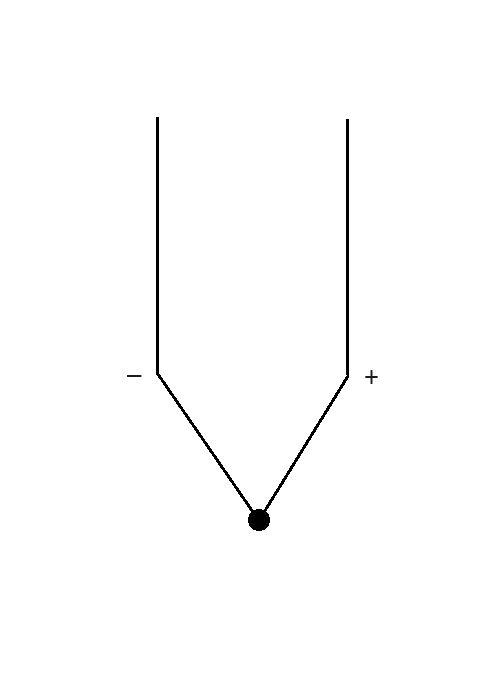018 – Thermocouple
Thermoelectric effect
Seebeck effect
Generation of voltage by heating
Introduction to:
- Thermometry
- Electric thermometer
Material:
a)
- Electrode for welding, made of nickel (the coating must first be removed using pliers and coarse sandpaper)
- Copper wire (approx. 20 cm)
Contact voltage 20 μV/K
or
b)
- Constantan wire (length approx. 20 cm; diameter approx. 0.5 mm)
- Iron wire (length approx. 20 cm; diameter approx. 0.5 mm)
Contact voltage 43 μV/K
or
c)
- Nickel-chromium wire (length approx. 20 cm; diameter approx. 0.5 mm)
- Nickel wire (length approx. 20 cm; diameter approx. 0.5 mm)
Contact voltage 40 μV/K
In general:Pairs of wires of two different metals A and B, e.g. also iron and zinc, are suitable
- Voltage meter in the millivolt range / multimeter
- Alligator Clips
- Candle / Lighter
Setup:
a)
- Remove the insulation from the copper wire and wrap it around the nickel electrode once or twice, creating a firm bond between the metals.
b) c)
- Twist the ends of the two wires over a length of 5 cm
- Connect the voltage meter to the free ends of metal A and metal B.
Execution:
- Heat the contact point of the metals with the candle flame.
Observation:
- The voltage meter shows a contact voltage in the millivolt range.
- As the contact point heats up, the contact voltage increases.
- For the metal pair a) copper – nickel it is : 20 μV/K, i.e. 2 mV corresponds to a temperature increase of 100 K.
- When cooling, the contact voltage decreases.
Explication:
- The contact voltage is due to the different exit work of electrons from different metals, the Fermi levels are of different heights.
- The contact voltage increases in proportion to the (absolute) temperature at the contact point.
Tips:
- The contact between the metals can be increased by hitting the point of twisting with a hammer or soldering the wires together.
- With a voltage meter in the μV range, even the heat of the hand can be detected.
- In the metal pair metal A nickel-chromium – metal B nickel, the contact voltage is about 40 μV/K (above 0 °C).
